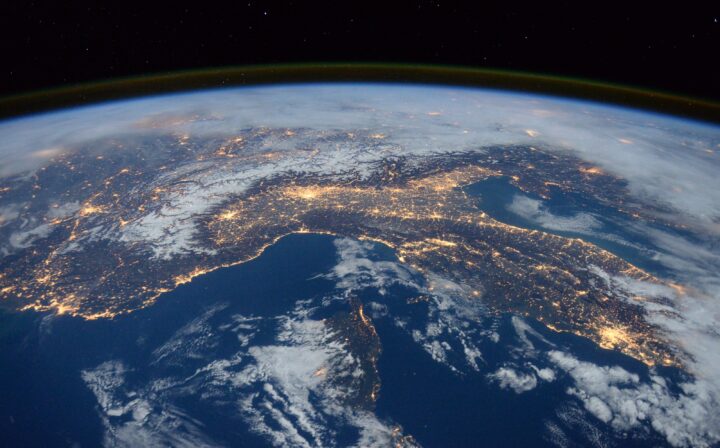Wild animal suffering

Our overall view
Sometimes recommended
We’d love to see more people working on this issue. But you might be able to do even more good working on one of our top priority problem areas.
Profile depth
Exploratory
Table of Contents
Why might wild animal welfare be a pressing global issue?
It’s easy for us to think of the natural world (without human intervention) as unambiguously positive: to imagine that wild animals live harmoniously with one another in a natural ‘balance.’
But advocates for wild animal welfare argue that this attitude ignores the huge amounts of suffering present in nature. Moreover, the large, healthy, adult vertebrates we usually picture (like foxes, songbirds, or lions) are a very small proportion of the overall wild animal population — almost all wild animals are actually juvenile1 invertebrates.2
This means that the actual day-to-day lives of wild animals are pretty different to how we’d expect. Animal lives are mostly quite short — in some species, only one in millions of juveniles survive to adulthood1 — and are filled with disease, parasitism, hunger, thirst, fear of predators, and suffering from heat or cold. Wild animals often die in very drawn-out, painful ways, and most die at a fraction of their possible lifespan.3
We can’t know for sure what it’s like to be a wild animal,4 but we can observe that many or even most wild animals live in conditions that would be considered extremely cruel to inflict on a human, or a domesticated animal.
Very little effort goes towards trying to reduce the suffering of wild animals, even within the broader field of animal welfare. There might be good reasons for this, as we’ll discuss below, but at present the field is extremely neglected.
But isn’t wild animal suffering natural?
Yes, it is. But something being natural doesn’t necessarily mean it’s good; for example, smallpox was natural, but it was good to eradicate it.
Working on wild animal welfare challenges this common mistake of equating the natural with the good. And this might even be itself a reason to work on it: maybe wild animal advocacy helps us make moral progress by expanding our moral circle, and potentially even setting a precedent for work on digital sentience, which may become a pressing issue in the future.
Is it possible to reduce wild animal suffering?
Wild animal welfare seems much less tractable than, for example, farmed animal welfare, where we’ve seen lots of wins recently and where humans are the unambiguous cause of the suffering. In the comparatively much newer and smaller field of wild animal welfare, it’s much less clear what exactly we should do.
There’s also a principled reason to think that wild animal welfare is less tractable: improving the lives of wild animal populations means intervening in some way in the ecosystems in which they live. However, it’s very hard to accurately predict the effects of our actions on ecosystems, because they’re so complicated. And there are historical examples of people making this kind of mistake.
One response could be that while we don’t know all the effects of our actions on ecosystems, we can always be cautious, monitor carefully, and only intervene in reversible ways.
In fact, it’s pretty clear that improving wild animal welfare isn’t wholly intractable, since it looks like wild animal welfare advocates have made promising progress in some areas.5 That said, it seems like the interventions we can be confident won’t do harm are currently limited. This may point to additional reasons to build this research field: because the area is so neglected, there might be many opportunities to discover more ways of reliably helping wild animals in the future.
For an example of an intervention that many seem to agree is likely very positive and tractable, see this short clip from Kevin Esvelt about the new world screwworm:
Learn more about wild animal welfare
- WildAnimalSuffering.org, an accessible and visually appealing introduction to the topic
- Understanding people’s attitudes towards wild animal welfare by Willem Sleegers with Faunalytics
- Wild Animal Initiative, a wild animal welfare research organisation
- Animal Ethics, a think tank with some research on wild animal welfare
- Reducing Suffering, the blog of Brian Tomasik, who has been an early advocate for wild animal welfare
Relevant career reviews from us:
- Cameron Meyer Shorb on dismantling the myth that we can’t do anything to help wild animals
- Persis Eskander on wild animal welfare and what, if anything, to do about it
- Peter Godfrey-Smith on interfering with wild nature, accepting death, and the origin of complex civilisation
- Marcus Davis on Rethink Priorities — which discusses Rethink Priorities’ recent research into wild animal suffering interventions
- Bob Fischer on comparing the welfare of humans, chickens, pigs, octopuses, bees, and more
- Meghan Barrett on challenging our assumptions about insects
- Sébastien Moro on the most insane things fish can do
- Beyond human minds: The bewildering frontier of consciousness in insects, AI, and more (a compilation episode of consciousness researchers)
Read next: Explore other pressing world problems
Want to learn more about global issues we think are especially pressing? See our list of issues that are large in scale, solvable, and neglected, according to our research.
Notes and references
- See Hecht (2019), Hecht (2021), Tomasik (2015), and Schukraft (2019): “From the point of view of total individuals, ‘animals’ is basically synonymous with ‘invertebrates.”’↩
- Bar-On et al. (2018) estimate biomass, not number of individuals; as far as we know, only Tomasik (2019) has estimated numbers of individuals.↩
- See Tomasik (2015). A lot of material supporting this general picture of wild animal lives can be found online; much of it is very disturbing, so we won’t link to it here.↩
- See Soryl (2018), chapter 2 and Schukraft (2019).↩
- For example, pigeon contraception and studying the high juvenile mortality rate of frigatebirds.↩
